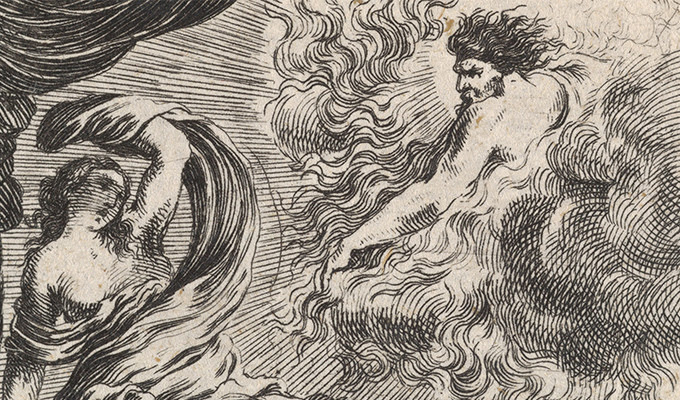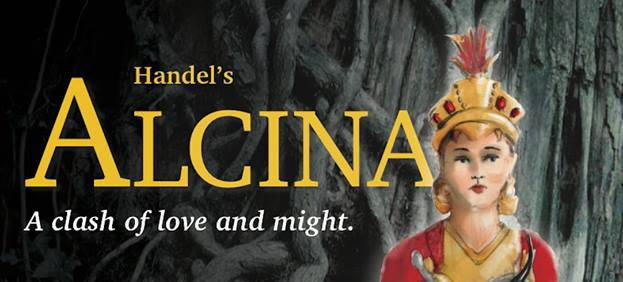Somewhere between an opera and an oratorio sits Handel’s dramatic musical work Semele. And for that reason, I will hereafter call it an “operatorio.” A generally well-liked musical retelling of the Greco-Roman myth of Semele, who, at Juno’s urging asked to see Jupiter in his fully divine form, promptly died, and the resultant child became Bacchus. You know. Standard Olympus tabloid fare. Semele was performed last night at Hill Auditorium, by the English Concert, conducted by Harry Bicket, along with the Clarion Choir, and a cast of world-renowned singers.
Semele was an unusual work for Handel in 1744. With one abstract exception, all of his previous oratorios had dealt with biblical subject matter, from the strictly-narrative Esther to the more innovative Messiah. Semele has more clearly defined characters than previous oratorios, and presents more dramatic situations that are explored within aria rather than recitative. Tellingly, it contains an unusually large number of duets, several back-to-back arias where one comprises a response to the previous (in one instance, Semele’s aria following Jupiter’s even picks up his meter and rhyme scheme, completing the last lines of his aria with the first lines of her own) and even a quartet in the first act — almost unheard of in this genre and time period.
Handel makes a lot out of very little. The score is filled with orchestral “effects,” which Handel generally seems more keen to play with in his oratorios than in his operas.This may have something also to do with the fact that the bulk of Handel’s oratorio-writing career happened after his opera-writing career was all but finished, and this change in style reflects a more general maturation as a composer. Whatever the reason, the Handel of Semele is far more playful than the Handel of Alcina, which I reviewed a few weeks ago.
The role of Semele last night was played by soprano Brenda Rae, whose performance was hampered more than anything by the fact that the titular character of this operatorio also happens to be the least compelling. Still, she did ample justice to it, and her rendition of “Myself I Shall Adore” in the third act garnered one of the only instance of mid-scene applause in the performance. And deservedly so. She brought a wonderful comic edge to the nearly eight-minute-long aria, which, through repeating only twenty-six syllables of text, can easily fall into tedium.
Equally comic was Elizabeth DeShong’s performance as Juno. (Her performance as Semele’s sister Ino — the two roles double — was more melancholy.) As Ino in Act I, DeShong enthralled with her voice (she is easily one of the best coloratura mezzos of the present day) but found the character lacking. As Juno in Act II, she made her first entrance with a fierce swagger that evoked the great mezzos of previous generations, such as Marilyn Horne and Christa Ludwig. Her Juno was both a comic and dramatic highlight of the evening. She, along with soprano Ailish Tynan as Iris, milked the first scene of Act II for every piece of laughter they could, and “Hence Iris Hence Away” achieved both riotous laughter and applause.
Bass Solomon Howard also played two roles, and if his first role as Cadmus was lacking in material, he made an impression on the audience with the sheer power of his voice the moment he first opened his mouth. A vocal highlight of Act I, he subsequently became a comic highlight in Act III, when, as Somnus, the god of Sleep, he faced off against the firey Juno. (Ailish Tynan’s Iris also played a crucial part in the comic stylings of this scene.) The lowest notes in Howard’s “Leave, Loathsome Light” got a noticeably impressed reaction from the audience around me, and his subsequent interractions with Juno received more than a few chuckles.
Countertenor Christopher Lowrey made the most of the relatively small part of Athamas, the prince to whom Semele is initially engaged, and he really came into his own in the last act, in which he sings the operatorio’s last full aria, “Despair No More Shall Wound Me,” which evokes some of the more popular excerpts from Handel’s Messiah. Benjamin Hullet had a bit more to do as Jupiter, and his rendition of “Where’er You Walk” (perhaps the operatorio’s most famous aria) was perhaps the most affecting moment of the evening.
The English Concert Orchestra was in top condition, as was the Clarion Choir. If there was one thing to be desired in the performance, it was brevity. The operatorio clocks in at about three hours of music, and the performance, which started at 7:30, did not let out until about 11:00. Still, Semele’s most lethargic moments are in its first act, and with such wonderful moments as Juno’s cheerfully sinister “Above Measure,” and the intensely dramatic “Ah Take Heed” between Jupiter and Semele, all the way through the end of Act III, it was hard not to be engaged, entertained, and at times deeply affected by this truly unique musico-theatrical operatorio.





